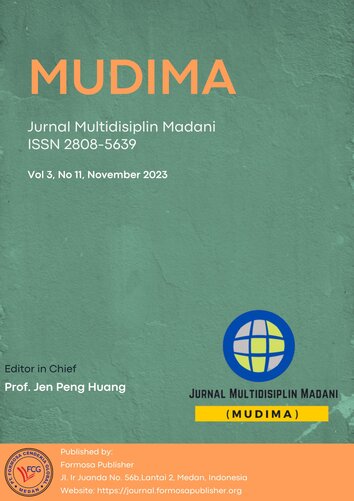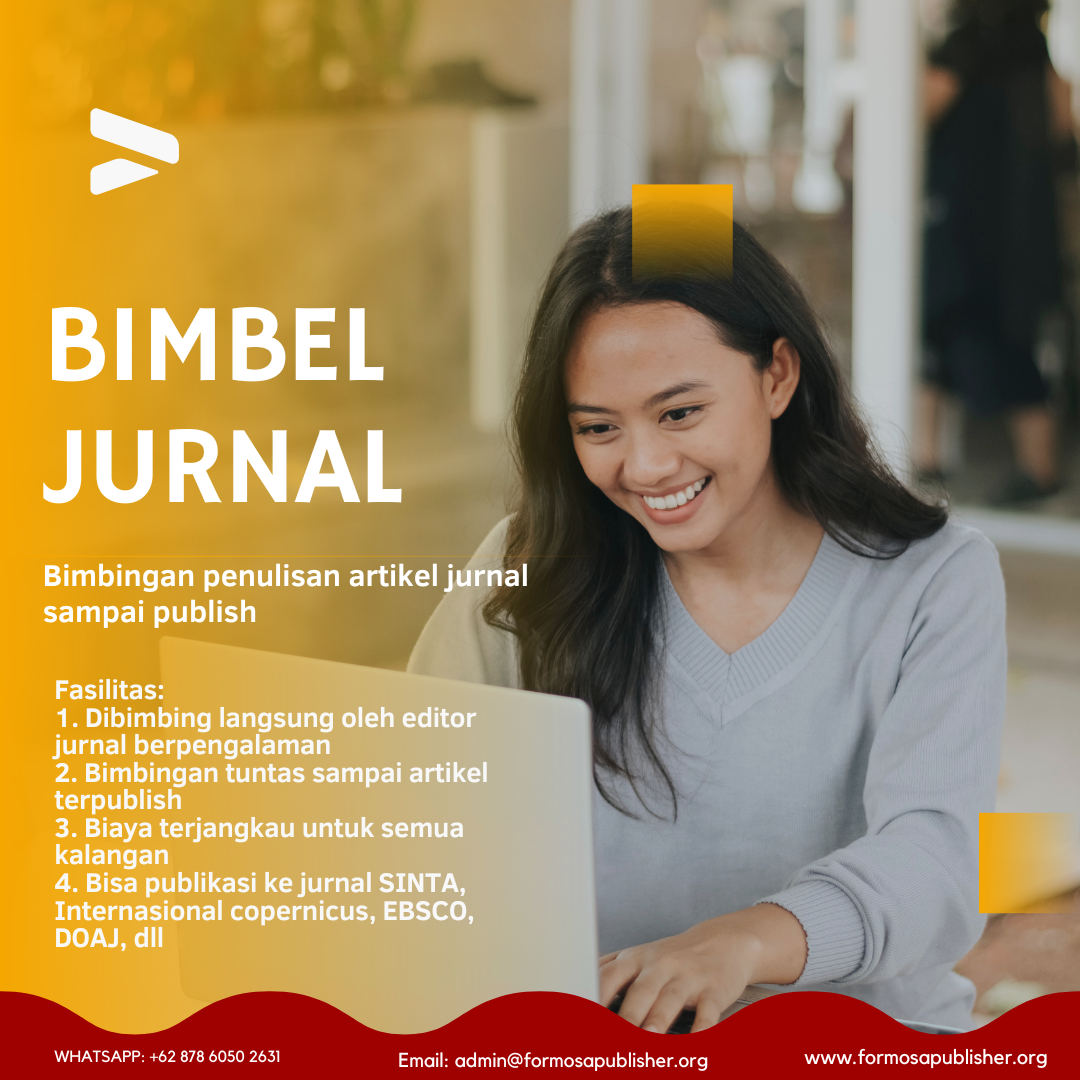The Influence of Moral Disengagement and Peer Support on Cyberbullying Behavior
DOI:
https://doi.org/10.55927/mudima.v3i11.6927Keywords:
Moral Disengagement, Peer Support, CyberbullyingAbstract
This study aims to examine the influence of moral disengagement and peer support on cyberbullying behavior among adolescents. The population in this study are all adolescents who have Instagram accounts and are in the adolescent development stage in the Jabodetabek area. The research sample consisted of 78 adolescents aged 15-18 years who actively use Instagram social media accounts. The data collection method was conducted through an online survey using a questionnaire distributed randomly to teenagers in the Jabodetabek area. Data processing was carried out using Partial Least Squares Structural Equation Modeling (PLS-SEM) analysis through Smart PLS software. The results showed that moral disengagement has a significant influence on cyberbullying behavior. Adolescents with high levels of moral disengagement tend to have more frequent cyberbullying behavior. Furthermore, this study also found that peer support has a significant effect on cyberbullying behavior. In this case, positive social support from peers can reduce the tendency of cyberbullying behavior, while negative support can actually increase this behavior. This study provides new insights into the factors that influence cyberbullying behavior among adolescent Instagram users. The findings can be used as a basis for the development of interventions aimed at reducing cyberbullying behavior among adolescents, as well as providing recommendations for relevant stakeholders to design effective prevention programs
References
Atmoko, D. B. (2012). Instagram Handbook Tips Fotografi Ponsel. Media Kita.
Baker, O. E. (2010). Cyberbullying and Its Correlation to Traditional Bullying, Gender, and Frequent and Risky Usage of Internet-mediated Communication Tools. Department of Educational Sciences, 12, 109–125.
Bandura, A. (2002). Selective Moral Disengagement in the Exercise of Moral Agency. Journal of Moral Education, 31, 101–119.
Bohang, F. K. (2017). Instagram Jadi Media ”Cyber-Bullying” Nomor 1. Kompas Tekno. https://www.google.com/amp/s/amp.kompas.com/tekno/read/2017/ 07/21/12520067/instagram-jadi-media-cyber-bullying-nomor-1..
Bohang, G. K. (2018). Juni 2018, Pengguna Aktif Instagram Tembus 1 Milyar. Tekno Kompas. https://tekno.kompas.com/read/2018/06/21/10280037/juni-2018- pengguna-aktif-instagram-tembus-1-miliar
Bussey, K., Fitzpatrick, S., & Raman, A. (2015). The Role Of Moral Disengagement and Self-Efficacy in Cyberbullying. Journal of School Violence, 14, 30–46.
Hinduja, S., & Patchin, J. W. (2008). Cyberbullying: An exploratory Analysis of Factors Related to Offending and Victimization. Routledge, 29, 129–156.
Hochman, N., & Schwartz, R. (2012). Visualizing Instagram: Tracing Cultural Visual Rhythms. Association for the Advancement of Artifical Intelligence, 12, 6–9.
Hurlock, E. B. (2002). Psikologi Perkembangan: Suatu Pendekatan Sepanjang Rentang Kehidupan (Edisi ke 5) (5th ed.). Gramedia.
Krisdyahayu, M. (2018). Sejarah Internet dan Perkembangan Media Sosial di Indonesia, Dari Friendster hingga Snapchat. Kompasiana. https://www.kompasiana.com/mariarosarikrisdyahayu6905/5b981cd3 12ae9437ca69f295/sejarah-internet-dan-perkembangan-media-sosial-di- indonesia-dari-friendster-hingga-snapchat?page=all.
Li, Q. (2006). Cyberbullying in School in Reasearch of Gender differences. School Psychology International, 27, 157–170.
Mead, S., Hilton, D., & Curties, L. (2001). Peer Support: A Theoretical Perspective. Psychiatric Rehabilitation Journal, 23, 134–141.
Meter, D. J., & Bauman, S. (2016). Moral Disengagement about Cyberbullying and Parental Monitoring: Effects on Traditional Bullying and Victimization via Cyberbullyig Involvement. Journal of Early Adolescence, 38, 303–326.
Rifauddin, M. (2016). Fenomena cyberbullying pada remaja. Jurnal Ilmu Perpustakaan, Informasi, Dan Kearsipan Khizanah Al-Hikmah, 4(1), 35–44.
Roomera, E. M., Cano, J. J., Fernandez, C. M. G., & Ruiz, R. O. (2016). Cyberbullying: Social Competence, Motivation and Peer Relationships. Media Education Research Journal, 24, 71–79.
Smith, P. K. (2012). Cyberbullying and Cyber Aggression. In. S. R. Jimerson, A. B. Nickerson, M. J. Majer, & M. J. Furlong (Eds.). Handbook of School Violence and School Safety: International Research and Practice, 93–103.
Sugiariyanti. (2009). Pelaku Bullying pada Anak dan Remaja. Intuisi Jurnal Ilmiah Psikologi, 2, 1–9.
Ybrra, M. L., & Mitchell, K. J. (2004). Online aggressor/Targets, Aggressors, and Targets: A Comparison of Associated Youth Characteristics. Journal of Child Psychology and Psychiatry, 4, 1308–1316
Downloads
Published
How to Cite
Issue
Section
License
Copyright (c) 2023 Dwi Astuti, Suwandi

This work is licensed under a Creative Commons Attribution 4.0 International License.
































